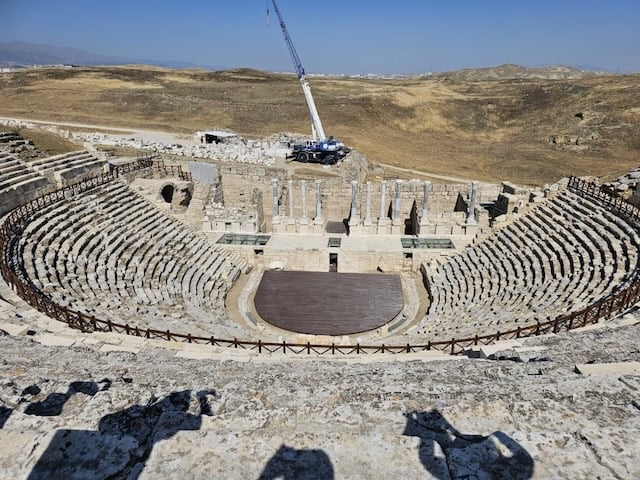Among the last words of Jesus to the apostles before He ascended to heaven was this commission: “Go therefore and make disciples of all nations, baptizing them in the name of the Father and of the Son and of the Holy Spirit, teaching them to observe all that I have commanded you” (Matt. 28:19–20). Jesus told the apostles what He wanted: that they would proclaim the Gospel of the kingdom and so make disciples. They were under a clear command to baptize those who came to believe—and implicitly, those who came to believe were under a command to be baptized. As the story of the early church continues in the book of Acts, what we see is that the apostles obeyed the Lord’s explicit command, and new disciples obeyed His implicit command. Four different accounts in Acts show us that baptism is a prompt expression of the repentance and faith granted through hearing and believing the Gospel. It is the appropriate and necessary response to new faith in Christ. The first account of water baptism in Acts comes on the day of Pentecost, when God the Father baptized the church with the Holy Spirit. As a crowd gathered to the sound of the rushing wind and was amazed by the sight of the disciples speaking in all kinds of languages, Peter stood up to preach the Gospel: “Let all the house of Israel therefore know for certain that God has made him both Lord and Christ, this Jesus whom you crucified” (Acts 2:36). In the following verses, the crowd responds: Now when they heard this they were cut to the heart, and said to Peter and the rest of the apostles, “Brothers, what shall we do?” And Peter said to them, “Repent and be baptized every one of you in the name of Jesus Christ for the forgiveness of your sins, and you will receive the gift of the Holy Spirit.” … So those who received his word were baptized, and there were added that day about three thousand souls. (Acts 2:37–38, 41) Peter calls for people to “repent.” The Greek word, metanoeō, means to change one’s mind. In the words of F. F. Bruce, repentance “involves a turning with contrition from sin to God.” To encounter Jesus is to face a decision either to embrace Jesus, the forgiveness of sins offered in the cross, and the new life of righteousness in the Spirit or to continue on the path of sin and rebellion from God. At the heart of the Gospel message is the truth that we are sinners. We are in the wrong with God, and we can’t put ourselves in the right with God. The good news is that what we cannot do for ourselves He has come and done for us, living the perfect life that we should live (but can’t) and dying in our place the death that we deserve. To become a disciple is to die to the old life that you’ve been living and live a new life in Jesus by the power of the Holy Spirit. This death and resurrection is portrayed in the act of baptism. As Jesus was buried and raised to life, so we are to be buried and raised in baptism (Rom. 6:4–5; Col. 2:12–13). It is an expression of our total break with our “former manner of life” (Eph. 4:22) in the world and a picture of God’s resurrection power at work in us. So, after Peter preached, those who received the word and were cut to the heart did not delay. They believed, they repented, and having done so, they immediately received water baptism as the outward display of their inward faith. Through the book of Acts, this prompt baptism demonstrating repentance in response to faith is the invariable practice of the early church. We see it next in accounts about Philip the evangelist in Acts chapter 8, first as he preached in Samaria (v. 12) and then when the Holy Spirit led him to the chariot of the Ethiopian official. This latter story especially demonstrates the immediate application of baptism. As Philip rode along in the man’s chariot, he “told him the good news about Jesus.” The man believed, and he took the initiative: “The eunuch said, ‘See, here is water! What prevents me from being baptized?’ And he commanded the chariot to stop, and they both went down into the water, Philip and the eunuch, and he baptized him” (Acts 8:35–36, 38). How did the Ethiopian know he needed baptism? Apparently, it was part of the “good news about Jesus” that Philip had told him. It wasn’t an addendum. It wasn’t an extra. Philip had said, in effect, “If you are enlisted in the army under the Commander, the Lord Jesus Christ, you wear the uniform. And part of the uniform is being baptized.” So, having believed and set his heart to follow Jesus, he was baptized. Two stories set in the city of Philippi in Acts 16—events that took place about twenty years after Christ’s ascension—will help to conclude the point, though they will not exhaust the story of baptism in the book of Acts. First, there was “a woman named Lydia, from the city of Thyatira, a seller of purple goods, who was a worshiper of God.” And we read that “the Lord opened her heart to pay attention to what was said by Paul”—that is, to the message of the Gospel. While we aren’t given a clear timeline, the verse that follows tells us that “she was baptized, and her household as well” (Acts 16:14–15). With Lydia, there is no falderal; it’s just a matter of fact. As a result of the Gospel invading her life, she presumably said, “Well, I want to do whatever it means to become a follower of Jesus Christ.” The answer, as Peter had said in Acts 2, was to “repent and be baptized.” And so she did, professing her faith and illustrating what it means to die with Christ and be raised to newness of life. Then there is the Philippian jailer, who was prepared to kill himself when an earthquake threw open the doors of his prison. But under the leadership of Paul and Silas, the prisoners had not taken the opportunity to escape, and Paul stayed the jailer’s hand. Seemingly out of the blue, the jailer said, “Sirs, what must I do to be saved?” (Acts 16:30). How he came to this question we don’t know—but something in his life to that point, or perhaps something he had heard to that night as Paul and Silas sang their hymns (v. 25), had made him understand that he needed a Savior. A moment of extreme distress and extreme relief had made him believe it. So Paul and Silas answered him: They said, “Believe in the Lord Jesus, and you will be saved, you and your household.” And they spoke the word of the Lord to him and to all who were in his house. And he took them the same hour of the night and washed their wounds; and he was baptized at once, he and all his family. (Acts 16:31–33) Again, we see the now-familiar pattern: The jailer heard the Gospel, he changed his mind, and he expressed his newfound faith through baptism. A story is told of a businessman in Yorkshire who arrived for his baptism in his best suit. The pastor tried to persuade him to change his clothes before he entered the pool. “No,” he said. “I’ve lived my life completely consumed with making money, and this suit represents all that I have ever aspired to. I want to baptize this suit unto the lordship of Jesus Christ.” To tell that story is not to mandate a certain way of being dressed during baptism. It is to remind us that when men and women come out of the pool, they come up having died to a former way of living and having dedicated their lives to Jesus Christ. To submit to baptism is an act of obedience to the Lord’s command, and it is also an expression of our commitment to obey Jesus in everything. If you believe in Jesus Christ and you have not been baptized, what is keeping you? The Lord who forgave your sins has commanded you to do this, and He deserves no less than your full self. And for those who have passed through the waters of baptism, let each day be an occasion for gratitude for the gift of faith and the grace that called you to Christ. Remember your union with Him in death and resurrection, and walk daily in newness of life, joyfully following the one who gave Himself for you. This article was adapted from the sermon “Repent and Be Baptized” by Alistair Begg.
Baptism with Water on Pentecost
Baptism is a prompt expression of the repentance and faith granted through hearing and believing the Gospel.
“See, Here Is Water!”
Two New Believers
Baptizing Our Whole Life

Copyright © 2025 , Truth For Life. All rights reserved.
Unless otherwise indicated, all Scripture quotations are taken from The ESV® Bible (The Holy Bible, English Standard Version®), copyright © 2001 by Crossway, a publishing ministry of Good News Publishers. Used by permission. All rights reserved.











 English (US) ·
English (US) ·